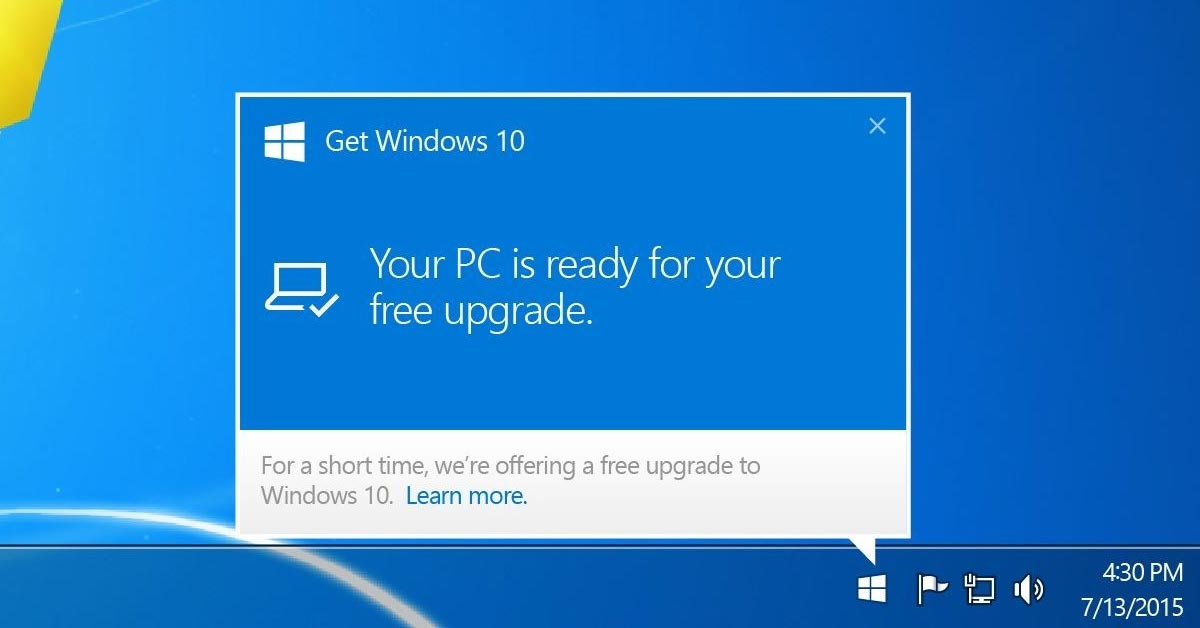Time is running out to upgrade for free
Windows 10 arrived on July 29th 2015. Reception has generally been very good and certainly more positive than for the release of Windows 8. To encourage adoption, Microsoft have been offering a free upgrade to users with devices running Windows 7, 8 and 8.1.
he free upgrade period ends on 29th July 2016 and after that getting Windows 10 will cost you upwards of £70 (depending on retailer and edition). So far it’s estimated that over 200 million PCs have taken advantage of the offer and upgraded.
Here at Optima we’ve been using Windows 10 since it was in beta. Obviously as an IT company it’s important for us to get to know any software that our customers might be using so we can offer support and assistance. But from a purely user point of view we’ve been pleasantly surprised. Some of our staff embrace change better than others but overall everyone in the office seems very content with Windows 10.
Try before you (don’t) buy
A useful feature of the upgrade is that you can roll it back to your previously operation system if you decide you don’t like it. It only takes a few clicks to roll the system back to the previous version of Windows (just be careful not to delete the windows.old folder that is created during the upgrade until you are 100% sure you don’t want to go back).
Look and feel
Although it was a feature some in the office liked, Microsoft has ditched the tiled metro style of Windows 8 and reverted to a more traditional layout.
Many people will be glad to see the Start Menu making a comeback (although this was also restored in Windows 8.1) and it now features optional ‘live tiles’ in a nod to those that liked this feature of Windows 8. The impression when the start menu is open is almost of a Windows mobile phone laying horizontally on your desktop and although this sounds strange it works very well.
Software
One of the most important things to consider when thinking about upgrading to Windows 10 is to look at any vital software you use and make sure it will run. Many companies have business critical programs that could cause huge disruption if they were to suddenly stop functioning. The good news is that under the hood Windows 10 has a lot in common with previous versions so if your programs are running fine on Windows 7 or 8 they should be good to go with 10.
Like previous versions, 10 also has a ‘compatibility’ mode that trick the application into thinking you are running an older version of Windows. This mode should enable automatically when possible compatibility options are detected.
If you are unsure about the compatibility of a critical application the best option is to search the internet for it. Windows 10 has been out long enough now for most applications to have been tested with it and any problems reported. There also may be information on the manufacturers website.
If your computer is part of an office network we would suggest talking to your IT department (or giving us a call!) before upgrading.
Security updates
Each version of Windows has a shelf life as Microsoft only releases security updates and patches for a limited time. This time is measured in years and even with Windows 7 installed you still have until the year 2020 before you need to worry. Upgrading to Windows 10 would give you 5 extra years of updates as its ‘End of Life’ is not due until 14th October 2025.
More information on Windows life-cycles can be found on the Microsoft website.
Our conclusion
As we’ve mentioned, almost everyone in the office is more than happy with Windows 10 and some have been using it for over a year now. It’s gone a long way to restoring confidence in Microsoft after the bad taste left by Windows 8. In our opinion it is basically what Windows 8 should have been and what Microsoft must wish it had been. You could argue that perhaps people were just not ready for the radical interface changes in Windows 8 but after using 10 for any length of time it’s obvious that it’s far more intuitive, on a desktop PC anyway, for deeper reasons than just being more familiar.
The bottom line is that if your computer is not too old and you are sure that any important applications will run then upgrading to Windows 10 is a no-brainer.
Especially as it’s currently free. But only until 29th July so don’t delay!
